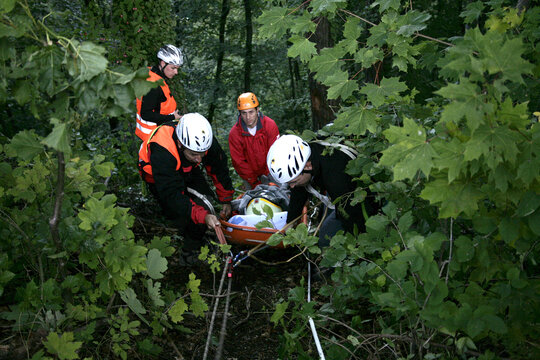Immobilization and Splinting in Mountain Rescue

Introduction
The commonest injury that results in a call to the mountain rescue services is trauma to the lower extremity; this can range from a simple ligament sprain to a com- plex displaced open fracture. In addition, tumbling falls with the potential for spinal and pelvic fractures are frequent (Hearns, 2003; Hohlrieder et al., 2007; Sharp, 2007). Thus, rescuers have to manage fractures ranging from minor to major life threatening condi- tions, often in a challenging environment, with limited diagnostic and therapeutic equipment. Reducing and immobilizing fractures are the main stay of definitive fracture management; the potential benefits are listed in table 1. It is believed that the earlier immobilization is done the lower the morbidity suffered by the casualty and, in femoral shaft fractures, also mortality (Ellerton, 2006).
Advances in the design of splints have enabled lighter and more compact designs to be brought to the incident site. Of particular note are adjustable splints (for example, adjustable cervical collars) that can be used on most casualties irrespective of body size. These are critical in mountain rescue whether terrestrial– all the equipment has to be carried, sometimes a considerable way– or helicopter based where weight and size are usually at a premium. In 2001, the International Commission for Mountain Emergency Medicine (ICAR MEDCOM) published a short recommendation that, “in general, in- jured patients in the mountains should be immobilized with a vacuum mattress” (Rammlmair et al., 2001). The purpose of the present paper is to report on subsequent research and expand the prior recommendation to include all immobilization devices for the vertebral column and the extremities.
-------------------------
Please look at the attached file for the complete recommendation